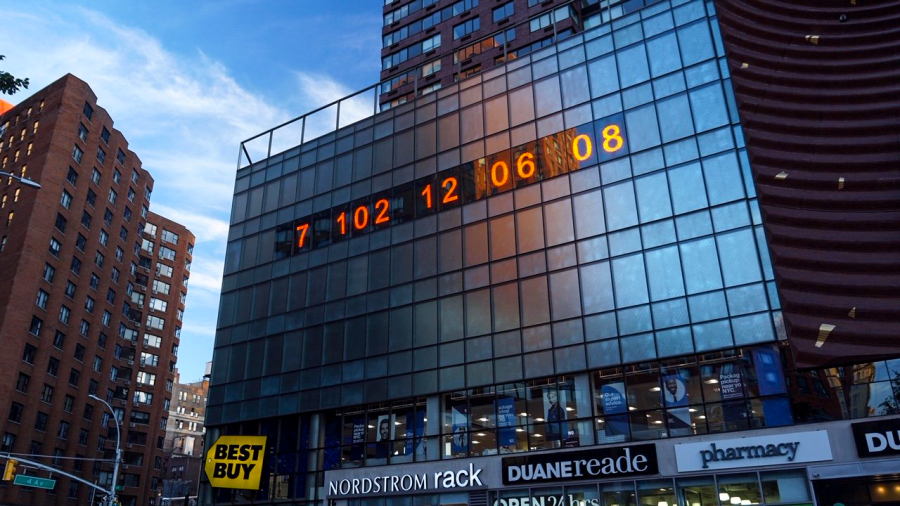On Sept. 17, two artists, Gan Golan and Andrew Boyd of New York, displayed a clock on the side of a building in Manhattan’s Union Square. The clock displayed a countdown of how long before the effects of climate change become irreversible, and how much energy is produced from renewable sources. It began counting down from seven years, 103 days, 15 hours, 40 minutes, and seven seconds.
The time displayed represents how long people have before the effects of harmful greenhouse gas emissions become irreversible, as well as how much energy comes from renewable resources.
According to Carbon Brief, the world as a whole has warmed 1.2 degrees Celsius since the Industrial Revolution. Golan and Boyd’s clock shows how long people have before the earth warms past two degrees Celsius, which would lead to many problems in the near future for stopping the increase of the effects of climate change.
The Climate Change Clock was put up as part of raising awareness during Climate Week.
Calculations for the clock came from the Mercator Research Institute on Global Commons and Climate Change, who gathered data from the Intergovernmental Panel for Climate Change Special Report on Global Warming.
The main goal of the clock, according to Gan Golan and Andrew Boyd, is to show people how long until the carbon budget runs out, and how important renewable resources are to slowing the countdown of the clock. According to the artists, the part of the clock that shows the percentage of renewable resources being used is to show people how important those resources are to slowing the rise of global warming.
A carbon budget, according to Engineering.com, “is the amount of CO2 that can still be released into the atmosphere while keeping the global average temperature increase below the 1.5 degrees Celsius threshold based on industrial levels.”
The artists who made the clock told ClimateClock.world, “the world as a whole must work to get all of its energy from renewable sources before the countdown hits zero.”
The clock sheds a light on the looming issue of climate change and its effects that are happening across the globe.
Engineering.com reports that according to the Mercator Research Institute on Global Commons and Climate Change, “the atmosphere can only absorb 420 gigatonnes of CO2 in order to stay below the 1.5 C threshold. Year-end 2017 statistics reveal that we emit around 42 Gt of CO2 each year, which means that we will reach 420 Gt in about nine years.”
What exactly do all those numbers mean? It means that in less than ten years, the effects of carbon dioxide in the atmosphere will become irreversible.
Effects of climate change include the melting of ice caps in Greenland and Canada, warmer winters, and stronger and more frequent storms and wildfires.
The climate clock does not provide a 100 percent accurate deadline for when the effects of harmful greenhouse gas emissions become irreversible, but more of an idea to show people that climate change is occurring at a rapid pace, and unless something is done, the planet faces a lot of problems for the future.
With coronavirus still on the rise, climate change has taken a back seat in terms of issues being looked at by world leaders. Global leaders are taking notice of the effects of climate change as more and more data surrounding it comes out.
The Climate Clock in Manhattan is on display until Sept. 27, but the artists and researchers behind the clock hope to put more climate clocks up all around the globe.

